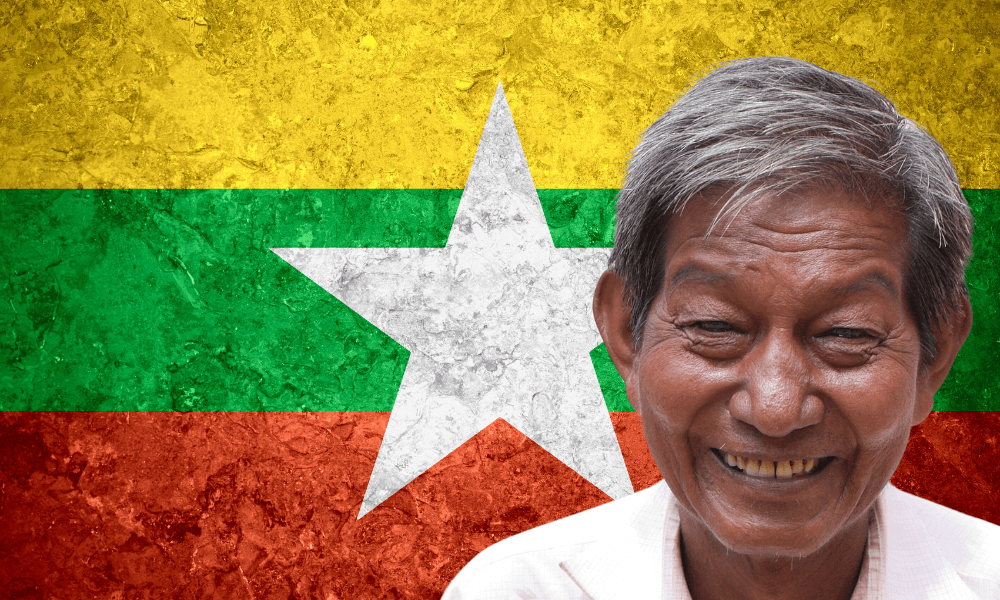Someone from Myanmar is called either Burmese or Myanma. Another name for the country of Myanmar is Burma, and this is how most of the country’s people identify. This is not to be confused with Bamar, the dominant ethnic group in Myanmar—any citizen of Myanmar is called Myanma or Burmese.
Myanmar is a fairly complex and diverse melting pot of many different peoples, but when it comes to the most basic nomenclature, anyone from these countries can be called Burmese or Myanma.
Generally speaking, either term is considered perfectly fine, but at the same time there’s a more complex picture that locals would prefer to understand.
Let’s look at this in more detail.

What is someone from Myanmar called?
Someone from Myanmar may be called either Burmese or Myanma—a lot of it can depend purely on personal preference.
At the same time, there is certainly a complex cultural and ethnic question going on here that is steeped in some recent historical events that may influence the way any given person from Myanmar thinks of their national identity.
All of this will become clearer when we look at where Myanmar got its name.
Firstly, though, let’s consider the ethnic groups of Myanmar today and how that influences people’s national identities.
The vast majority of the population of Myanmar is made up of Bamar people.
The Bamar are an ethnic group originating from Southeast Asia and are essentially Myanmar’s natives.
They represent around 35 million people, and Burmese is their native language.
Around 68% of Myanmar’s population is comprise of Bamar people. In British English, Bamar and Burmese are often used interchangeably, but this is not really correct; Burmese today is a multi-ethnic category representing all people who live in Myanmar.
The remaining portion of Myanmar’s population is made up of many other minority groups.
The largest is the Shan people, making up about 9% of Myanmar’s population, or about 5 million people.
They are a Tai ethnic group again originating in Southeast Asia.
A further 7% of Myanmar’s population is made up of Karen people, around 3 million people in Myanmar though there is a total global population of around 9 million.
You then have Rakhine people comprising around 4% of the population, and then further minorities of Chinese, Indian and Mon people.
The point is that all of these groups are, in a legal sense, Burmese or Myanma.
At the same time, most likely feel that their ethnic identity is far more important to who they are than their nationality.
Where does the name “Myanmar” come from?
The name of this country has, for a long time, been a matter of contention.
Ultimately, the name derives from the Burmese word mranma, a ethnonym for the people who inhabited that region of the world.
The etymology of the word itself, though, is not known. It’s often though they derive from the Sanskrit Brahma Desha, meaning “land of Brahma”.
However, the country has undergone multiple name changes over time.
Myanmar was a British colony from 1824 until its independence in 1948, during which time it was always called Burma.
In 1989, a military coup led by Saw Maung saw many parts of the country renamed, and the name was changed from Burma to Myanmar.
So, there have certainly been debates about which name to use, and ultimately there may be very different feeling among any given person from Myanmar that you speak to.
In 2016, Myanmar’s own state counsellor suggested that either term is acceptable, and she herself merely prefers Burma out of habit.
Ultimately, it’s always worth talking to individuals to get a sense of how best to refer to the country, but given its legal name is currently Myanmar, that one may be best for the time being.
The same, really, goes for whether to call a person Myanma or Burmese.
Is it Burmese or Bamar?
This question is much clearer cut.
A person from Myanmar is called Burmese; this, as mentioned, is a multi-ethnic classification which refers to anyone who lives in Myanmar.
Bamar is an entirely different term, even though most Burmese people are Bamar.
Bamar is a specific ethnic group, the majority ethnic group in Myanmar, but there are of course many other peoples and ethnic groups representing in Myanmar’s population.
It’s crucial you understand these two terms are in no sense interchangeable.
Where do the Burmese live?
There is a somewhat staggering estimated population of around 60 million Burmese or Myanma people globally.
Of these, the vast majority live in Myanmar; around 51 million of them.
After that, the single largest group can be found in Thailand, where there are around 1.5 million Burmese people to be found.
Around 300,000 can be found in Malaysia, and a further 233,000 in the United States.
Further populations can also be found in Singapore, China, Australia, Taiwan, Japan and India, including many others.
The point being that Burmese people of many different ethnic groups live all over the world, and may identify in one of any number of ways depending on their individual preferences.
The simple solution, then, if you’re unsure, is always just to ask the individual in question.
It’s a complex question, at least from the outside, when you have not lived within the history of the country and the way that the nomenclature has changed or stayed the same over the years.
Again, though, the simple answer is that someone from Myanmar is called either Burmese or Myanma.
More in Demonyms
- What Do You Call Someone From Afghanistan?
- What Do You Call Someone From Algeria?
- What Do You Call Someone From Argentina?
- What Do You Call Someone From Australia?
- What Do You Call Someone From Azerbaijan?
- What Do You Call Someone From Bangladesh?
- What Do You Call Someone From Barbados?
- What Do You Call Someone From Belgium?
- What Do You Call Someone From Botswana?
- What Do You Call Someone From Crete?
- What Do You Call Someone From Denmark?
- What Do You Call Someone From Ecuador?
- What Do You Call Someone From Egypt?
- What Do You Call Someone From El Salvador?
- What Do You Call Someone From Fiji?
- What Do You Call Someone From Finland?
- What Do You Call Someone From France?
- What Do You Call Someone From Ghana?
- What Do You Call Someone From Greece?
- What Do You Call Someone From Greenland?
- What Do You Call Someone From Hong Kong?
- What Do You Call Someone From Iceland?
- What Do You Call Someone From India?
- What Do You Call Someone From Ireland?
- What Do You Call Someone From Israel?
- What Do You Call Someone From Japan?
- What Do You Call Someone From Jersey?
- What Do You Call Someone From Jerusalem?
- What Do You Call Someone From Jordan?
- What Do You Call Someone From Kazakhstan?
- What Do You Call Someone From Laos?
- What Do You Call Someone From Malta?
- What Do You Call Someone From Myanmar?
- What Do You Call Someone From Niger?
- What Do You Call Someone From Pakistan?
- What Do You Call Someone From Panama?
- What Do You Call Someone From Peru?
- What Do You Call Someone From Rwanda?
- What Do You Call Someone From Singapore?
- What Do You Call Someone From Sri Lanka?
- What Do You Call Someone From Sweden?
- What Do You Call Someone From Switzerland?
- What Do You Call Someone From Thailand?
- What Do You Call Someone From The Isle of Wight?
- What Do You Call Someone From The Ivory Coast?
- What Do You Call Someone From The Netherlands?
- What Do You Call Someone From Uzbekistan?
- What Do You Call Someone From Vatican City?
- What Do You Call Someone From Wales?
- What Do You Call Someone From Zimbabwe?

